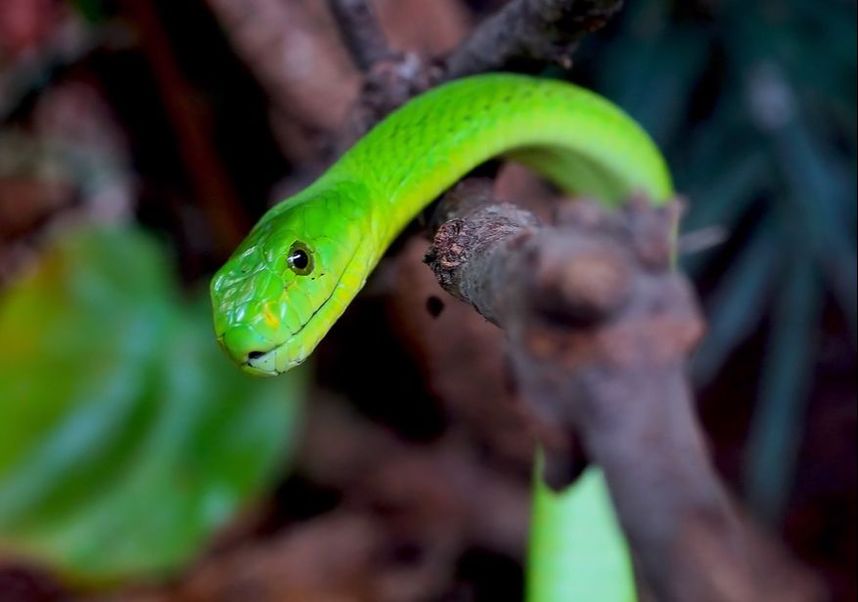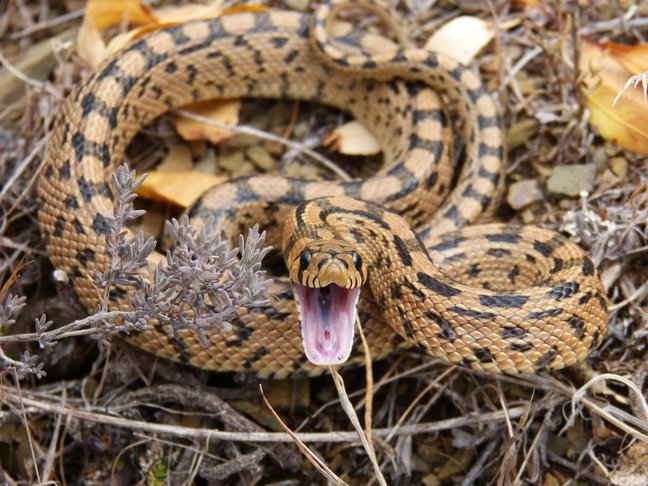|
It’s back to school for the year and as always, due to the beautifully warm weather, it's one of the most popular times of the year for outdoor ed trips. It's also prime snake season and given the fact that Australia has the world’s greatest collection of deadly snakes, including the deadliest and second deadliest that can kill you within an hour, if you're bushwalking or camping, it's one risk that seriously needs to be addressed. Australia has around 140 different species of snake and about 100 of these are venomous. Yes, we do indeed have the most poisonous creatures in the world. However, out of all of these, only a few are likely to inflict a wound that could kill you. These include, but are not limited to the Inland Taipan (Fierce Snake), Brown snake, Tiger snake, Death adder, Black snake, Copperhead and Rough Scaled snake. Each year in Australia, there are around 3000 snake bite injuries, of which 400 - 500 casualties receive anti-venom. A fact is that snakes don't always envenom their victims and more often than not, it's a dry bite. However, you must assume if bitten, that every bite is venomous and treated as such until otherwise proven. Also be aware that baby snakes are more likely to inject a massive dose of venom into you if they bite, as they don’t have the maturity to decide to venom or not to venom, that's the question on all snake’s fangs. A fatality as a result of a snake bite is quite rare. It's roughly between 1 and 3 people out of the 3000 who receive bites year that will result in a fatality. Around 60% of recorded deaths in Australia have been due to brown snake bites; the remainder are generally shared out amongst the inland taipan (world deadliest snake), the tiger snake (super aggressive) and the death adder (scary name).
Therefore, how do you manage this risk? Well for starters “DON’T TOUCH SNAKES!” With the exception of the tiger snake, most snakes aren't aggressive. By leaving them alone, you've basically managed most of the risk involved. I've encountered countless snakes over the years and I've never even come close to getting bitten, because they tend to make a fast getaway. However, when provoked, poked, prodded and picked up, they do tend to become quite responsive. The fact that most bites occur on hands and wrists when people try to capture or kill them, should say something. Stupid people have a tendency towards picking snakes up and boys in particular find that they can't resist the temptation and on average more young males get bitten than anyone else. So again, “DON’T TOUCH SNAKES!” To highlight just how docile they can be, one of my colleagues last year was setting up a shelter when a red belly black snake slithered over his foot. He stood still, possibly frozen from the initial shock and associated fear, and the snake just continued on its way, not even noticing that my colleague was there. If you're hiking, ensure everyone is wearing sturdy footwear and heavy long pants and/or gators. The fangs on Australian snakes can't usually penetrate through these materials that prove great protection against the fangs. The one snake bite casualty I dealt with had been hiking in reef sandals and been bitten on the arch of her foot after stepping on the snake. Had she been wearing hiking boots, she would never have been bitten. Signs & Symptoms: With everything, no matter how well you try to prevent these things, people still get bitten. (If only we could leave the stupid people at home). Most bites that occur when out hiking, occur when someone accidentally steps on them. The pain has been described from being struck by a baseball bat, to being like a stick flicking up at you, to people feeling nothing at all until they start showing the signs and symptoms of envenomation, which include headache, tingling, stinging, burning or abnormal feelings of the skin, feeling anxious, tachycardia (increased heart rate), irregular heartbeat, nausea (feeling sick) vomiting, stomach pain, diarrhea, dizziness, breathing difficulties, problems swallowing, muscle weakness, confusion, paralysis, coma or death in the most severe cases. You may also see redness around the area of the bite and residual venom. However, it's possible that you won't see two clean fang puncture wounds and so rely more on the signs and symptoms. Treatment: To treat a snake bite wound, use the pressure immobilisation method. To do this, lay the person flat and do not let the victim move or walk anywhere as this will increase the pace at which the venom travels through the body. Take a compression bandage (preferably a snake bite bandage if you have one in your kit) and apply pressure directly over the top of the bite. The bandage should be firmly on and not so tight that it restricts blood flow. Snake venom travels through the lymphatic system, not the blood stream and so the compression bandage slows this process. If you have a second bandage (which you should), start at the toes, or fingers and apply the pressure bandage all the way to the top of the limb. Use another bandage each time you run out and then test the toes or fingers for capillary refill to ensure it’s not too tight. Once you have the entire limb bandaged, immobilise that limb. If it's a leg, tie it to the other leg. If it's an arm, splint or tie it to the body. Basically, just make sure they can't move it. Then get them to professional emergency medical care as fast as possible. To be clear, this is just a general overview and for accurate up-to-date first aid advice, check the Australian Resus Council’s Official Guidelines It's important to be aware that snake bites can cause a severe allergic reaction, anaphylaxis in some people. If you're treating a snake bite and someone has an anaphylactic reaction, treat it in the same way you would any other anaphylaxis as it becomes the priority and then apply the pressure immobilisation bandage. Whilst snakes are a risk when out and about in the Australian bush, the most important thing to remember in the effective management of this risk is, “DON’T TOUCH SNAKES!” Happy summer camping season!
0 Comments
Your comment will be posted after it is approved.
Leave a Reply. |
Categories
All
Archives
April 2021
|


 RSS Feed
RSS Feed